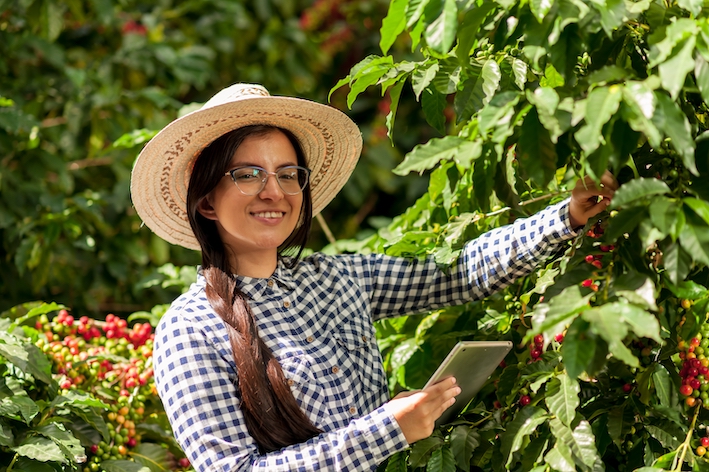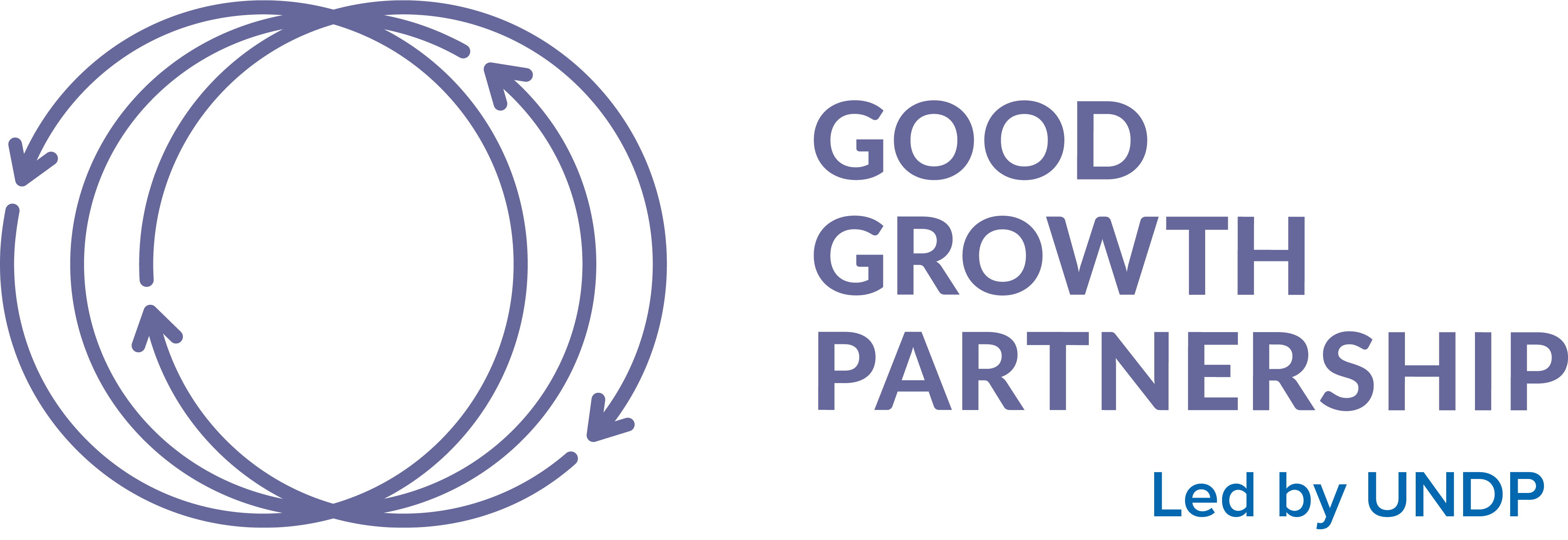
Simply counting the number of women participating in a given initiative is an inadequate measure of effective gender equality.
It is more important to examine the impact of their contributions, says Jeannette Gurung, the founder and executive director of Women Organizing for Change in Agriculture and Natural Resource Management (WOCAN) who developed a unique certification framework, the W+ Standard, designed to do just that in 2014.
The W+ Standard she conceived certifies projects that create increased social and economic benefits for women participating in environment, agriculture and economic development projects.
“The focus is on outcomes and avoiding ‘pinkwashing’ – the idea is that this market-based approach will generate enough revenue that project activities for women's empowerment can be sustained, improved and increased over time,” Gurung said during a talk at World Bank headquarters in Washington this month.
-
Click here for: A presentation on the W+ Standard by founder Jeannette Gurung
Projects certified in Indonesia, Kenya, Morocco, Nepal, and Vietnam, for example, are creating shared social value in six areas, including time savings, health, education and knowledge, food security, income and assets and leadership.
Associated W+ Units represent the quantifiable and realized improvements in a woman’s life, as a result of project activities, which are audited by a third-party verifier, based on the W+ Standard requirements. These units are then sold to businesses, investors or public institutions, allowing them to meet their social responsibility targets. Projects that generate carbon credits can add the W+ certification to meet the demand by buyers who wish to support social impacts in addition to environmental actions that decrease global warming emissions.
An essential principle is that at least 20 percent of revenue from the sale of W+ credits goes to women’s groups active in the project area, said Gurung, responding to questions.
Q: What was the inspiration for the W+ standard?
A: We weren’t seeing gender or women included in the standard and certification systems around the world to a significant extent. From our own experience, we realize that gender mainstreaming and capacity building alone does not produce the desired results for gender integration in projects. We needed to provide an incentive for agencies and actors within the projects to take actions that increase women's empowerment and gender equality. WOCAN has always been convinced that women's groups and collectives have enormous albeit unrealized potential to be producing and scaling up positive results and solutions for climate change, food insecurity and poverty, but they're hugely under-resourced and unrecognized. We began to explore how we might provide a new stream of revenue directly to those women's organizations.
Q: How did that work out?
A: The answer presented itself in 2014 as we were learning about carbon measurement, standards and markets. We were impressed and thought this was a really rigorous way to monetize environmental impacts, and channel new capital to fund environmental projects. We wondered if we could do the same for women's empowerment and the rest is history! We are the first and I think still the only women specific framework measuring and monetizing women's empowerment. We’re a full-bodied standard – not a label – and seen as such.
Q: What is the W+ standard framework?
A: It provides metrics and procedures to quantify, verify and monetize women's empowerment results within projects and within supply chains. Through discussions with women in rural Kenya and Nepal, when asked what women's empowerment meant to them and how they would measure it, both groups came up with the same six areas of women’s empowerment: time, health, education and knowledge, food security, income and assets, and leadership. Our team then developed methods for measuring results related to each of these domains. Projects need to use at least one but can use all six if deemed appropriate.
Q: Is this framework introduced during the project or beforehand?
A: It’s also used for designing projects. When a project is starting up and wondering how to include women's empowerment, the six areas offer a framework of indicators in conjunction with the impact measurement. The basic premise is that a project measures results, according to each of the areas, and then they are independently verified. It is very similar to the architecture of the carbon market. One W+ credit is generated for every 10 percent of impact within the specific domain for each woman within that monitoring period. It can be used to assign values for climate, the U.N. Sustainable Development Goals, or to produce gender credits. It’s possible to combine W+ with a carbon unit.
Q: Do women’s organizations benefit from W+?
A: What is really important to WOCAN is to see that related revenue reaches women's organizations. We decided that was what we really wanted to happen, and we made the commitment that at least 20 percent of the revenue from each W+ unit sold is returned to women's groups and organizations within that project area as grants. These groups determine how these funds are spent, for climate adaptation and development activities.
Q: How does it work in practical terms?
A: The process begins with consultations with women stakeholders within the project area. We discuss which of the six domain areas seem most appropriate to the project – the ones that the women themselves would identify where there have been impacts generated. At this point, we also start to speak with them about the mechanism for the transfer of that 20 percent because once those units are sold, it needs to go to women's organizations, in a reliable, transparent manner. We also conduct a gender analysis, which is added to the project design document. This offers a more in depth understanding of the specific indicators that will be used to measure the domains. While indicators for each domain are suggested, they need to be adjusted to suit the specific context of each project.
Q: How do you establish the baseline?
A: The team comes up with measurement questions for a survey, which provides the baseline data. We hire local women enumerators and train them to conduct the surveys. Then, further down the road, at a point in time determined by the project, the same survey is repeated to measure the results and to get the percentage of change. The Monitoring and Results report is prepared, then a third-party independent verification is undertaken.
Q: What happens after verification?
A: WOCAN receives the verification report and issues W+ credits accordingly to the project developer – a government agency, private sector firm or a development agency, for example, and those credits can then be sold. What's intended here is that the benefits go to the women doing the work, but also to the project developers. This must be profitable for them. We want them to at least cover the cost of the measurement and project activities. The buyers of the credits get verified outcomes, and social returns, which are increasingly being discussed by impact investors.
Q: Could you share an example?
A: The first project was awarded a UNFCCC award. The government of Nepal was installing small biogas units across the country, measuring the carbon emissions and selling those carbon credits to European countries. This was simultaneously having a transformational impact on women's lives, but nobody noticed it because they only measured carbon emissions. We applied the W+ Time method to document the increase in women’s discretionary time. This was done by measuring shifts in time usage away from lower-value activities toward higher-value activities. For the Nepal biogas program, we calculated two and a half hours saved per woman every day, which was significant. And this didn’t include the additional benefits to the forest from which they had been cutting fuelwood.
Q: How were these time savings used?
A: A very good question. Women used the newly created time to help with community activities, spend time with children, put more efforts into their kitchen gardens, etc. We sold credits and returned the money to the women's groups, and we watched what they did with it. They used the funds for what we call climate adaptation activities – they repaired a water supply; they diversified their agriculture systems and kitchen gardens. These new activities required both time and funds and the women now had them both.
Q: How could an approach like this affect the gender results of FOLUR?
A: FOLUR has environmental and food system projects in many countries with activities that can and are empowering women in different ways. The World Bank, through its PROGREEN program that works closely with FOLUR, is supporting WOCAN in developing training materials and other approaches aimed at building local capacity to apply the W+ Standard. The first step has been raising awareness and knowledge as to the potential benefits of this approach. Next is the identification of enthusiastic project teams and sites that include local women’s groups and wish to implement activities that empower women. For example, FOLUR project teams in Mexico and Ghana are reviewing the W+ Standard methodology and are in dialogue with their government counterparts on the implications of applying it towards enhancing gender outcomes of their projects.
~ By Julie Mollins, published Feb. 13, 2023







